Journey towards ultralight: the final chapter
Hiking Practice
In November of 2016 when we launched the Australian Hiker blog and podcast one of the first articles I wrote was Journey toward ultralight along with the release of the podcast episode of the same name. This article and podcast discussed the concepts behind ultralight hiking and my reasoning for trying to lighten my load as much as I could and become an ultralight hiker. I revisited this process in 2018 prior to starting my trip on the Bibbulmun Track which accelerated my desire to drop weight for that 1,000 km trail.
Over the past seven years I’ve continued to slowly chip away at the weight of the gear I carry and at the same time I’ve looked at changes to my hiking practices that will also facilitate a potential weight reduction on trail. Over the past six months in particular, I have seen probably the biggest shift in this journey including with some changes that surprised me.
In this article I bring to a close my journey towards becoming an ultralight hiker having landed on a philosophy that will carry me forward even if the journey never ends.
What is Ultralight hiking?
The aim of ultralight hiking is to minimise the weight you carry on a hike. The aim is to reduce the stress on your body, potentially increase the speed and distance you travel on a daily basis, and generally increase the enjoyment of your on-trail experience.
There are a number of key principles associated with ultralight hiking (for more detail read Journey toward ultralight) but the term you will most often come across is ‘base weight’. Base weight is the weight of your pack minus consumables such as food, water, and fuel and is typically categorised into three levels:
- Lightweight: Base weight of 9 kg (20 lbs) or less
- Ultralight (UL): Base weight of 4.5 kg (10 lbs) or less
- Super ultralight (SUL): Base weight of 2.3 kg or less
Steps on my ultralight journey
Starting my journey towards becoming an ultralight hiker was a relatively easy one for Gill and I. After a particularly arduous trip in the Alpine region we realised we were carrying too much weight in our packs and needed to do something about about it and this put in place a series of actions.
Step 1 – Weigh you gear
Our first step was to weigh all our gear, down to the gram and put it into a spreadsheet. In addition to being aware of managing our gear and helping us decide what we needed on each trip, this provided us with a starting point for the whole process. Electronic kitchen scales work well for this and we (Tim) now use a combination of four scales for our hiking needs. Two to cross check the weight of each item, one for the really light stuff (under 200 grams) and one to weigh a fully loaded pack (yes I’m obsessive).

Step 2 – What didn’t we use?
Next we looked at what we were carrying on our hikes and whether we were actually using it.
A good example is our stove set. At the time we started our ultralight journey we were using a Trangia 27-1 Stove Set which included a number of different pan/pot options, most of which we never used. The next time we went out for an overnight trip we left most of the pots at home. We took this action through our entire kit with the attitude of if we aren’t going to use it why carry it? Safety gear aside, of course. In many respects this is one of the easiest ways to reduce pack weight.
At the end of each hike if you look at all the gear you have taken with you and work out what you didn’t use, and why, then it’s amazing how much weight you can jettison.
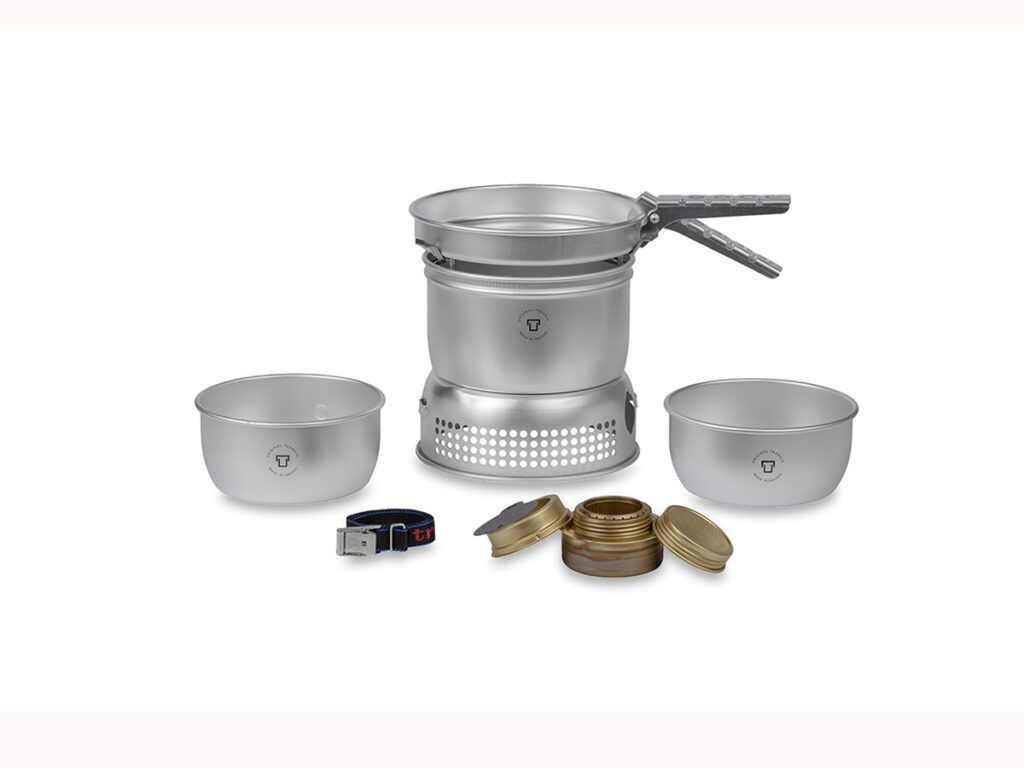
Trangia 27 − 1 Small UL Aluminium Stove set
Step 3 – Multi purposing
You don’t always need to carry dedicated equipment for everything. A good example here is not carrying a pillow. In my case I use my spare clothing bag as my pillow on multi-day hikes. I save my ‘real’ pillow for shorter hikes were I don’t really care about weight.
I no longer use a winter hat but use buffs year round in different configurations. I will always carry two buffs
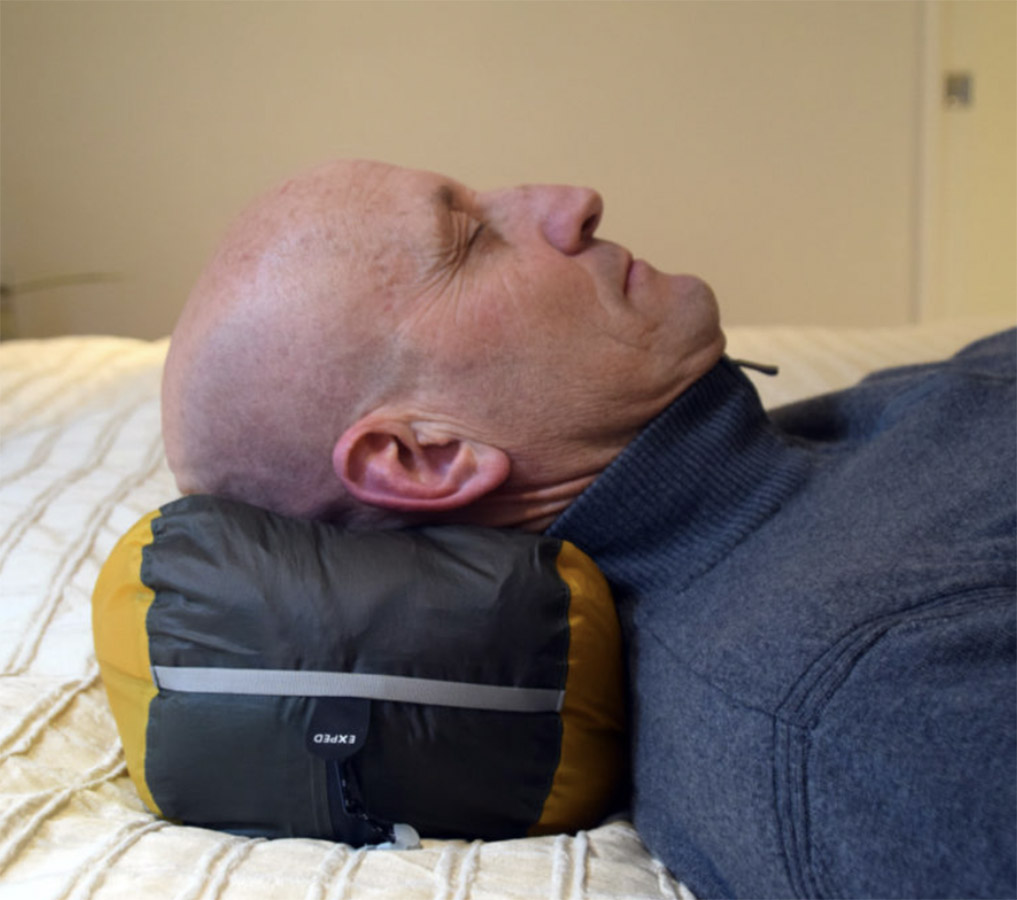
Pillow alternatives

Tim with Australian Hiker Wattle Buff side view
Step 4 – Gear replacement
As much of a gear freak that I am, and as much as it feels like Christmas when I buy new ‘toys’ I still have some gear in my kit that is a number of years old – I’m just waiting for it to die before I replace it.
After you have identified a need for a piece of gear and worked out what fits and feels comfortable you’ll typically find that you’re left with several options. While there are a large number of factors that come into play when choosing hiking gear, including emotional factors, there are three key considerations. These are ‘Durability-Price-Weight’.
It’s highly unlikely you will ever find a product that satisfies all three considerations so often you will find yourself selecting gear based on two of the factors. Without fail hiking gear that is really lightweight isn’t cheap because getting the weight down usually involves the use of highly technical materials that have been developed in a lab somewhere at great expense. In which case, it may be that durability is more important to you than weight.
In reality most people will typically balance the selection out and won’t necessarily go for the lightest gear available either because they do want a bit more durability and/or have a limited budget.
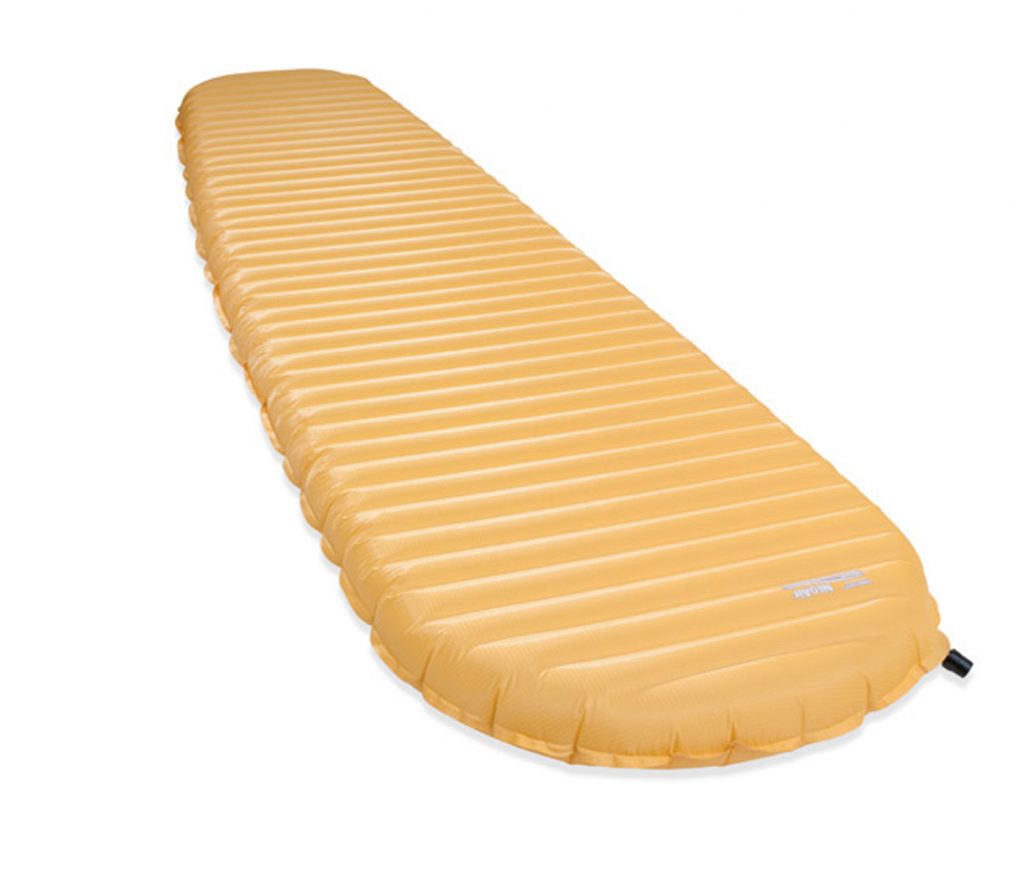
Therm-a-rest Neo Air XLite Sleeping Mat
Don't forget the food
Food weight isn’t usually considered when determining if you’re an ultralight hiker but really it should be. The traditional school of thought is that each hiker should carry 908 grams (2 lbs) of food each day. This measurement is another arbitrary figure and doesn’t take into account your body size or dietary requirements. I’ve never taken this much food on a hike and about seven years ago I was carrying 750-800 grams of food per day and still coming home with unused food.
After each hike I would weigh the unused food, determine what I wasn’t eating and why. At the time of writing this article in April 2023, my average daily food usage is now 612 grams per day.
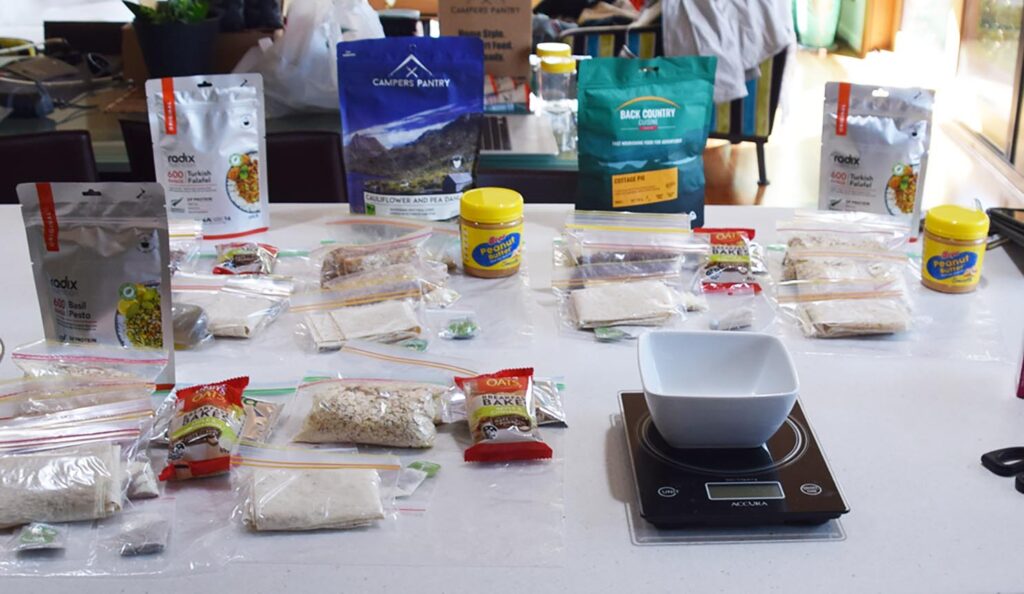
Getting food ready for a hike
Hiking practice
For me this was this next step in the ultralight journey. The biggest change to my hiking habits in the past seven years occurred on my trip on the Tasmanian South Coast Track at the end of 2022. I found that my breakfast options that had served me so well for many years just weren’t cutting it and that I could no longer stomach cereal. What this meant was that rather than having cereal and hot tea, I just had a muesli bar while I was walking.
This impacted my hiking practice in a number of ways. First it reduced the amount of gas I used which was already pretty minimal. Second it meant that my morning routine was greatly shortened and I was leaving camp a good 30 minutes earlier than I would normally do. This meant I had more time to cover my planned distances or could potentially cover a greater distance. And last, this impacted the weight of the food weight I carried even when I added additional food bars to replace the cereal.
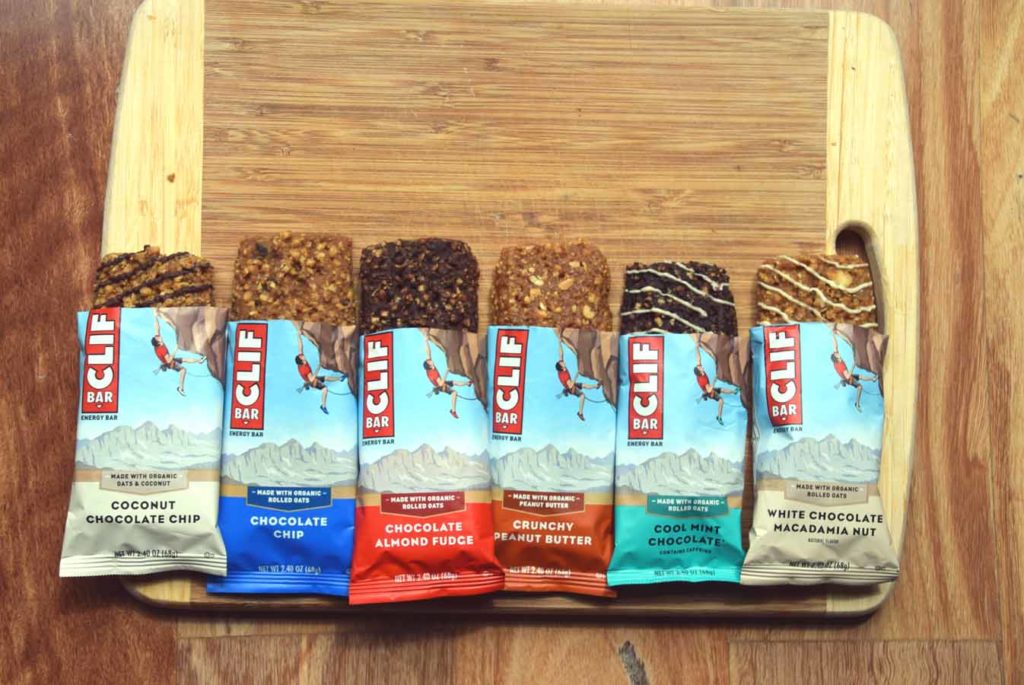
Cliff bars

My spare clothing bag has now become my pillow. I tuck it into my sleeping bag hood so it follows me and doesn’t slip off the sleeping mat
Ignore the above!
For the past seven years, almost exclusively I have been focused on reducing the weight of every piece of equipment that I own. Then in late 2022-early 2023 things changed. When it came time to replace my old Therm-a-rest XLite Sleeping Mat I didn’t as expected, go for the same model but instead opted for a Therm-a-rest XTherm Sleeping Mat. This new mat had a greater thermal rating and weighed approximately 80 grams more than my old mat. In addition I recently added a new item to my pack and that was the Exped Sit Pad Flex at a weight penalty of 40 grams. I decided that this small weight impost was worth carrying given the amount of time I spend looking for a dry seating option when I’m on-trail which is harder than it sounds when its been raining.
Overall these two items combined only added 120 grams extra weight to my pack but I found that both these options improved the quality of my on-trail experience and were well worth it.
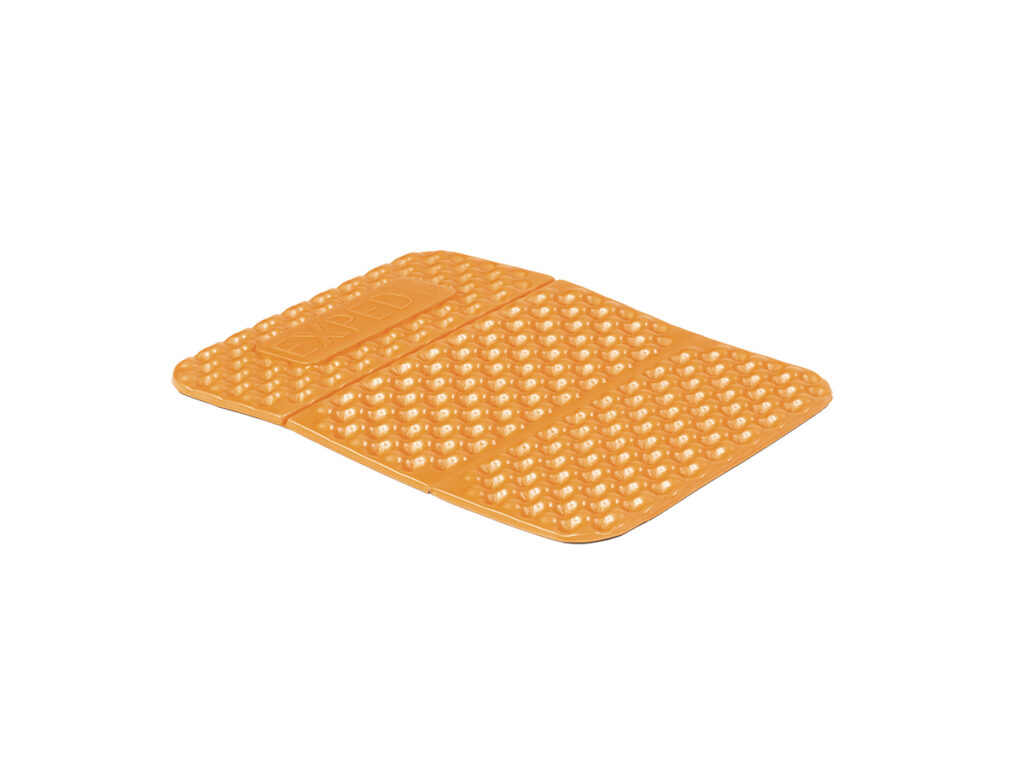
Exped Sit Pad Flex
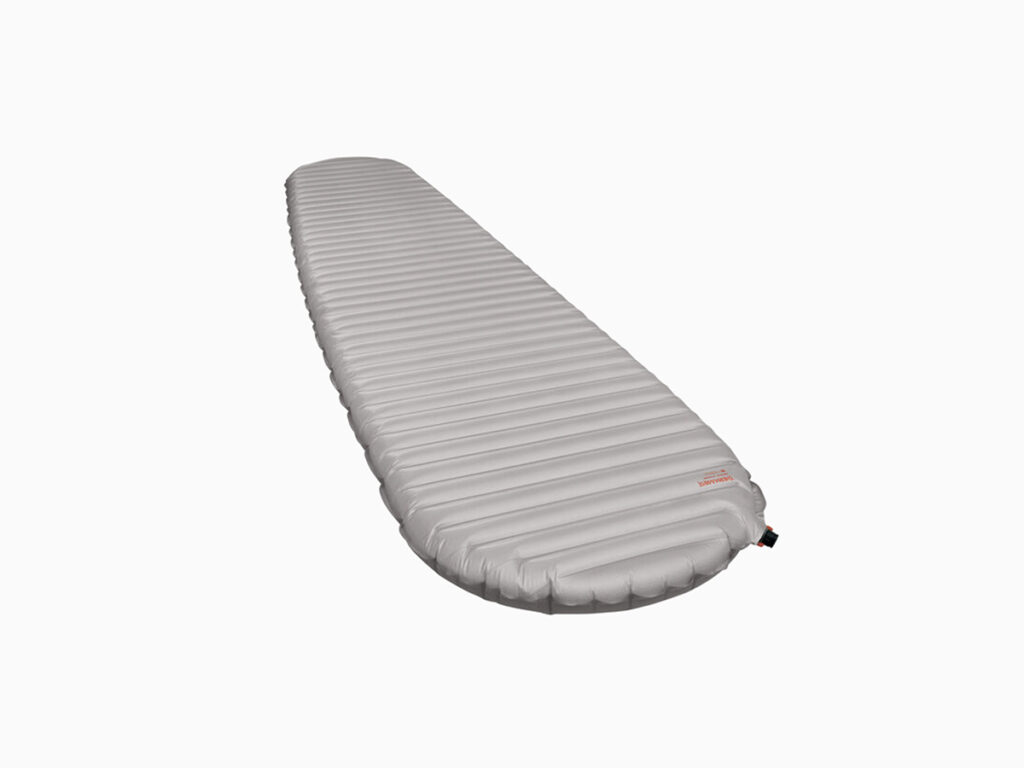
Therm-a-rest XTherm Sleeping Mat
Where am I now?
So, based on the above definition, have I now reached ultralight status? The straight answer is no, not yet. Based on the above definitions I’m now a lightweight hiker with my base weight just under 7.99 kg or if I’m carrying my podcasting equipment 8.45 kg. This base weight consists of gear that will keep me safe and comfortable in a range of conditions from -7 to 30+ degrees Celcius over multiple days.
Last words
I don’t think anyone is going to argue that carrying less weight on your back is more comfortable, it’s just a fact. Carrying less weight will allow you to travel faster, farther, or a combination of both, on a daily basis if that’s what you want to do. It will typically mean you can get away with a smaller pack which is a joy if you haven’t tried it.
But trying to reduce your pack weight to reach a predefined arbitrary level should never be the goal just so you can say you’re an ultralight hiker. Rather, your goal should be aiming to carry the smallest amount of weight possible to suit your hiking style and needs based on the environment you’re hiking in and the degree of comfort you choose.
There are some items that should be considered as essential such as first aid equipment, food, and adequate clothing but what this means is going to differ from individual to individual, and from hike to hike. I’ve never needed a first aid kit to treat an emergency situation and based on that I could jettison most of my first aid kit but that’s not going to happen. It’s just bad practice and in all honesty it would’t save a huge amount of weight.
There’s an old adage in hiking of ‘comfort in camp or comfort on the trail’ that comes into play here. Carrying items such as pillows, a seat, a stove etc. will all contribute to your enjoyment once you reach camp but this adds to your pack weight so you need to determine what’s important to you.
While my philosophy around ultralight hiking has been set and I now firmly sit (just) into the ‘lightweight’ category. I will never get my weight down low enough to fall into the Ultralight category as a blogger with the extra gear I carry. However, I encourage everyone whether they aspire to be an ultralight hiker or not, to look at what they’re carrying.
I will always look at my gear and make considered choices with what I am carrying, I’m not fussed whether I ever reach ultralight status. So while my journey continues, I’ve landed for now!